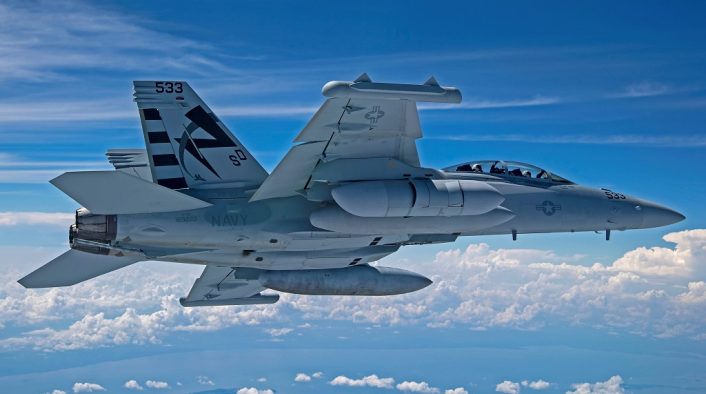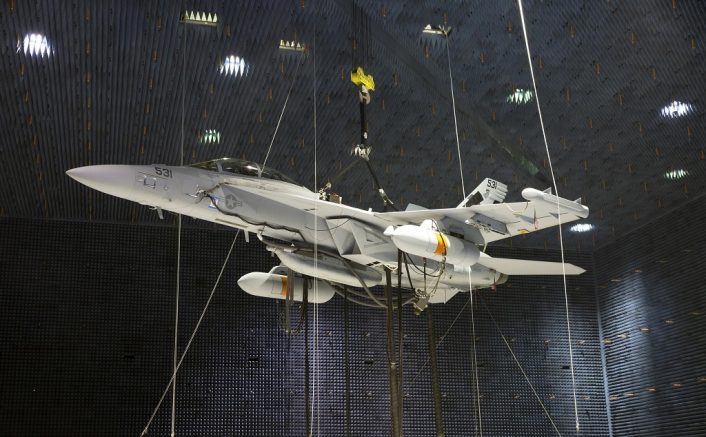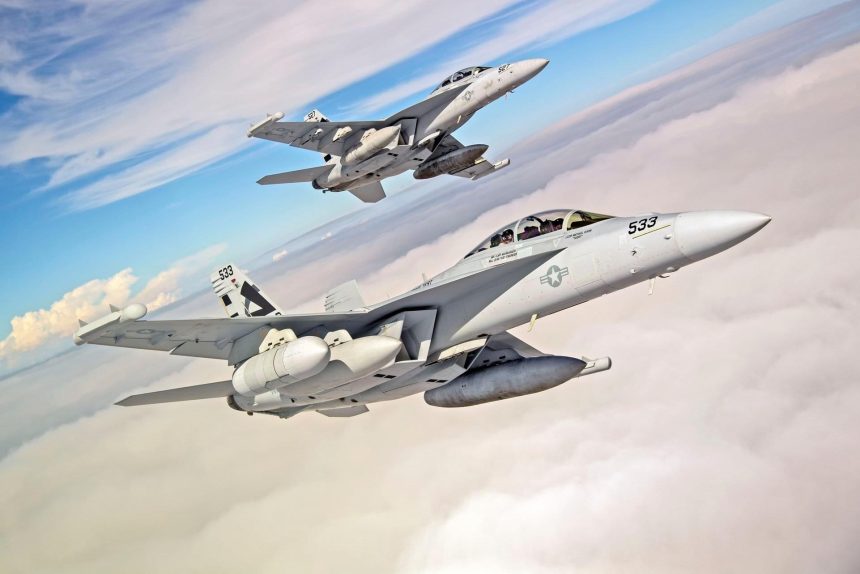This first flight validated the capability of the pod to be safely flown under the Growler’s wings.
NAVAIR (Naval Air Systems Command) recently announced that an EA-18G Growler of Air Test and Evaluation Squadron (VX) 23 flew for the first time with the new Next Generation Jammer Mid-Band (NGJ-MB) pod on August 7, 2020 from Naval Air Station Patuxent River (Maryland).
This first flight is technically called a Safety of Flight (SOF) checkout, used to verify that the Growler can fly safely with the pod attached under its wings before proceeding with further test flights. According to Lt. Jonathan Williams, VX-23 test pilot, the test was successful and didn’t register significant anomalies: “There was a lot of discussion on how the NGJ-MB pod would affect how the Growler handles and it was exciting to have the jet feel like any other flight”.

Last month, Australia joined the NGJ development, with two separate memorandums to equip the EA-18Gs of the Royal Australian Air Force (RAAF) with both the NGJ-MB and NGJ-LB (Low Band) pods to augment and successively replace the ALQ-99 Tactical Jamming System (TJS). Australia is the only country outside of the United States to operate the Growler, employing also the ALQ-99 pod, which has been in service since before the Vietnam War and is becoming insufficient against modern threats, especially the so-called “double digit SAMs” (Surface-to-Air Missiles), like the SA-10 “Grumble” (S-300) and the SA-21 “Growler” (S-400).
Lt. Jonathon Parry, NGJ-MB Aeromechanical Project Officer, further explained this concept: “The Airborne Electronic Attack (AEA) community has been relying on the ALQ-99 TJS for decades. Gone are the days of isolated Surface-to-Air Missile systems that operate on a small frequency spectrum and do not integrate into a larger Integrated Air Defense System. Modern adversaries are developing complex emitters that use advanced techniques to defeat legacy jamming. NGJ-MB will provide new capabilities to the fleet to ensure spectrum dominance against current and future threats.”

According to NAVAIR, the NGJ-MB pod “will address advanced and emerging threats using the latest digital, software-based and Active Electronically Scanned Array technologies and will provide enhanced AEA capabilities to disrupt, deny and degrade enemy air defense and ground communication systems.” The system consists of two pods, referred to as a shipset, that will provide the EA-18G Growler new capabilities “against advanced threats in the mid-band frequency range through enhanced agility and precision within jamming assignments, increased interoperability and expanded broadband capacity for greater threat coverage against a wide variety of radio frequency emitters.”
The NGJ-MB pod will initially be used together with the ALQ-99, replacing it completely as soon as the NGJ-LB and NGJ-HB (High Band) are ready. This was also explained by our Editor David Cenciotti in a previous article:
The NGJ-MB, also known as the AN/ALQ-249(V)1 pod, uses directional emitters and AESA (active electronically scanned array) technology and an all-digital back end. It also has digital and software-based tech embedded in the design, which increases the ability to jam and allows for rapid beam steering and advanced jammer modulation. As the images show, the pod is pretty large. Its size (and subsequent induced drag – with an impact on the overall range of the Growler) was, according to GAO, the reason why the Navy rejected Raytheon’s bid for the low-band pod. This article by our friend Tyler Rogoway at The War Zone provides many details about the NGJ pods and their recent developments.
Therefore, the Raytheon NGJ-MB will replace one of high-band ALQ-99 pods that Growlers carry under each wing: another pod, dubbed NGJ-LB, will replace the low-band pod that the aircraft carry on the centerline store position under the fuselage; another one, a high-band pod, will be carried on the other wing.
While the NGJ-MB pod will “cover the majority of critical threats”, NGJ-LB will be extremely important to provide cover to stealth aircraft, threatened by the emerging counter-stealth Low Band radars, engaging enemy threats from increased stand-off distances and employing increased capacity (number of jamming assignments).








